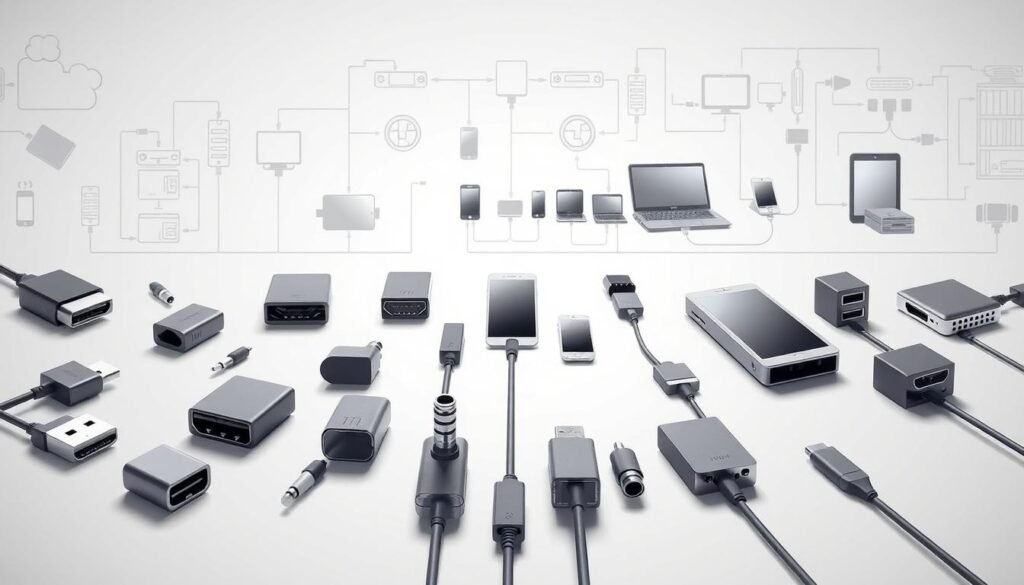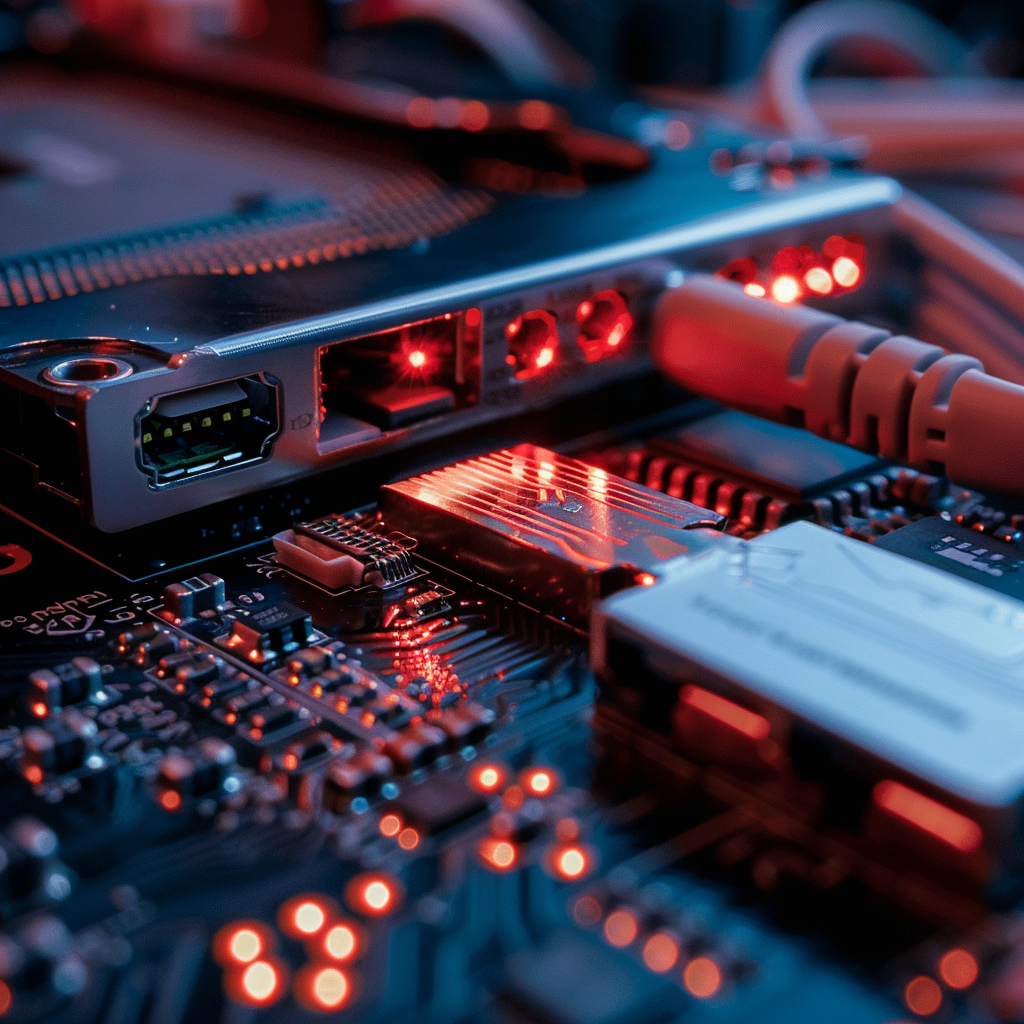Understanding SATA to USB compatibility is essential for anyone working with storage devices or transferring data across systems. With advancements in technology, knowing how SATA and USB interfaces interact can help you make informed decisions about the adapters, cables, or enclosures you use.
A. What is SATA to USB Compatibility?
SATA (Serial ATA) and USB (Universal Serial Bus) are two foundational interfaces in modern computing. SATA is designed for internal storage connections, providing high-speed data transfer between a computer’s motherboard and storage devices such as hard drives (HDDs) or solid-state drives (SSDs). USB, by contrast, serves as a universal connector, enabling external devices to interface with computers seamlessly. From flash drives to external hard drives, USB has become a staple for connectivity.
SATA to USB compatibility bridges the gap between these two technologies, allowing internal SATA drives to connect to a computer via USB. This is achieved through the use of specialized adapters, cables, or enclosures that convert the SATA interface into a USB-compatible output. Such setups are invaluable for a range of applications, including data backups, system upgrades, and the conversion of internal drives into portable external storage solutions.
B. Key Use Cases for SATA to USB Adapters: Unlocking Versatility
- Data Recovery: When a computer’s internal storage fails or becomes corrupted, a SATA to USB adapter offers a lifeline. By connecting the drive to another system, users can retrieve vital files, documents, or media with minimal hassle. This is particularly useful for recovering data from older drives or systems with outdated connectors.
- Storage Expansion: Transforming an unused internal drive into a portable external drive is one of the most practical uses of SATA to USB adapters. By using an external enclosure, users can repurpose old drives for additional storage, backups, or on-the-go data transport.
- Upgrading Systems: When upgrading from a traditional HDD to a faster SSD, SATA to USB adapters make the transition seamless. They enable users to clone their existing data, including operating systems and programs, ensuring minimal downtime and a smooth upgrade experience.
- Testing and Repairs: For IT professionals and hobbyists, SATA to USB adapters are indispensable tools. They allow quick testing of drives to diagnose issues, run diagnostics, or perform repairs without the need to dismantle the computer. This saves time and effort while ensuring accurate troubleshooting.
C. Types of SATA to USB Adapters and Enclosures: A Comprehensive Guide
- SATA to USB Cables: These are straightforward and cost-effective solutions for connecting SATA drives to USB ports. They are typically powered through the USB connection, making them ideal for 2.5-inch drives that require minimal power. However, their simplicity might limit advanced features such as data encryption or extended durability.
- SATA to USB Adapters with Power Supply: Designed for high-power devices like 3.5-inch HDDs, these adapters include an external power supply to ensure stable operation. They are essential for users working with large-capacity drives or performing data-intensive tasks.
- SATA to USB Enclosures: These cases not only convert internal drives into portable external storage but also provide physical protection from dust, shocks, and moisture. Many enclosures support advanced features like hardware encryption and cooling systems, making them a robust choice for long-term storage needs.
- Docking Stations: These versatile tools allow users to connect and access multiple drives simultaneously. Some docking stations include features such as offline cloning, high-speed data transfer, and compatibility with multiple drive formats, making them invaluable for IT professionals and power users.
D. Compatibility Considerations: Ensuring Seamless Connections
- USB Standards: The USB standard of your adapter plays a crucial role in data transfer speeds. For instance, USB 3.0 and higher offer significantly faster speeds than USB 2.0. If you’re working with high-capacity drives or large file transfers, ensure compatibility with USB 3.0, USB 3.1, or USB-C for optimal performance.
- Drive Size: SATA drives come in two main sizes: 2.5-inch (common in laptops and SSDs) and 3.5-inch (typical for desktop HDDs). Ensure the adapter or enclosure you choose supports the specific size of your drive to avoid incompatibility issues.
- Operating System Support: Most modern operating systems, including Windows, macOS, and Linux, offer plug-and-play functionality for SATA to USB adapters. However, it’s always wise to confirm driver requirements, especially if you’re using an older operating system.
- Power Requirements: Larger drives, particularly 3.5-inch HDDs, require external power to function properly. Adapters with built-in power supplies or dedicated power inputs ensure stable operation, preventing data loss or drive malfunctions.
- Data Transfer Speeds: To achieve optimal performance, align the SATA standard of your drive (e.g., SATA III) with the USB standard of your adapter (e.g., USB 3.0). This ensures that neither the drive nor the adapter bottlenecks your data transfer speeds.
E. Troubleshooting Common Issues: Solving Problems Effectively
- Drive Not Recognized: Ensure that all connections are secure and properly seated. For 3.5-inch drives, confirm that the adapter’s external power source is functioning. Check if the drive spins up or shows any signs of activity, and verify that your operating system supports the adapter without additional drivers.
- Slow Transfer Speeds: Verify that you’re using a high-speed USB port (e.g., USB 3.0 or higher) and a compatible adapter. Older USB standards or damaged cables can bottleneck performance. Additionally, check the SATA standard of your drive and ensure it’s matched with the adapter for optimal speeds.
- Frequent Disconnects: Inspect cables and connectors for visible damage, loose connections, or dirt. Frequent disconnects can also result from insufficient power supply, especially for larger drives. Try using a different USB port or cable to isolate the issue.
- Drive Errors: Use diagnostic tools provided by your operating system or third-party utilities to check for bad sectors, file system errors, or hardware faults. If errors are detected, consider using recovery software to retrieve data and replacing the drive if necessary.
F. Benefits of Using SATA to USB Adapters: Unlocking Potential
- Versatility: SATA to USB adapters are incredibly versatile, capable of connecting a wide range of storage devices such as HDDs, SSDs, and even optical drives. This makes them an invaluable tool for users handling diverse hardware setups.
- Portability: These adapters transform internal drives into portable storage solutions. By placing a drive in an external enclosure or using a simple adapter, users can carry large amounts of data conveniently, making them ideal for professionals and students on the go.
- Cost-Effective: Rather than purchasing expensive pre-built external drives, users can repurpose existing internal drives using affordable SATA to USB adapters. This approach minimizes costs while maximizing the utility of older or unused hardware.
- Convenience: SATA to USB adapters offer a plug-and-play solution for accessing data stored on internal drives. This eliminates the need to open a computer case, simplifying tasks like data recovery, backups, or transferring files between systems.
G. Safety Tips for Using SATA to USB Adapters
- Avoid Overheating: Ensure that external enclosures or adapters are placed in well-ventilated areas during use. Prolonged operation in enclosed or hot spaces can lead to overheating, which may damage both the drive and the adapter.
- Use Surge Protectors: To prevent electrical damage, connect your adapters and power supplies to surge protectors. This is particularly important for sensitive 3.5-inch drives requiring external power.
- Safely Eject Drives: Always use the safe eject option on your operating system before disconnecting a drive. This prevents data corruption and ensures all active processes are properly closed.
- Store Properly: When not in use, keep drives and adapters in protective cases or anti-static bags to prevent dust accumulation or electrostatic damage.
H. Comparing SATA to USB Solutions: Cables vs. Enclosures vs. Docking Stations
- Cables: Ideal for quick, temporary connections, SATA to USB cables are lightweight and portable. They are best suited for 2.5-inch drives but lack the durability and added features of enclosures or docking stations.
- Enclosures: These provide long-term solutions by converting internal drives into external ones. Enclosures offer physical protection and advanced features like encryption or cooling, making them perfect for portable and secure storage needs.
- Docking Stations: The most versatile option, docking stations allow multiple drives to be connected simultaneously. Features like offline cloning and multi-format support make them invaluable for IT professionals managing large amounts of data, though they are less portable than cables or enclosures.
Maximizing Your SATA to USB Setup
SATA to USB compatibility offers a practical and versatile solution for accessing, repurposing, and expanding your storage devices. By leveraging the right adapters, enclosures, or docking stations, users can efficiently recover data, enhance their setup, and simplify system upgrades. Understanding the various types of SATA to USB tools and addressing potential compatibility concerns ensures optimal performance. These adapters empower users to handle modern computing challenges with ease, making them indispensable in both professional and personal contexts.
Additional Resources
- How to Choose the Best External Hard Drive Enclosure
Learn more about external enclosures and how to select the right one for your needs. - Guide to Understanding USB-C and its Benefits
Explore the advantages of USB-C and how it enhances compatibility with modern devices.



